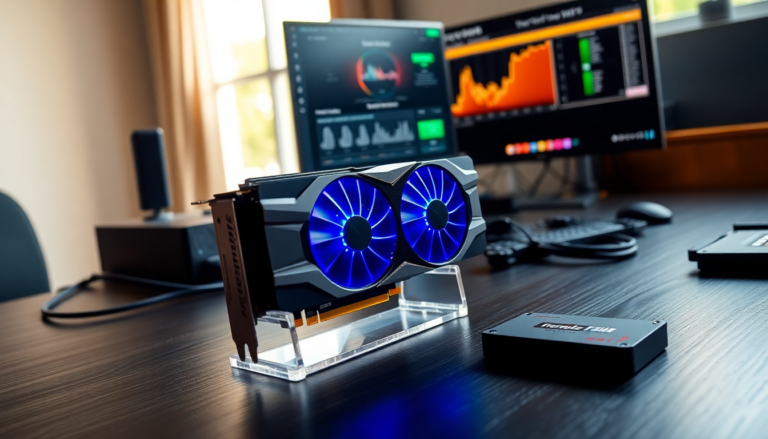The world of graphics processing units (GPUs) is buzzing with excitement, especially after the latest innovations showcased by Colorful. Get ready for the upcoming RTX 50-series graphics cards, which will introduce support for two M.2 NVMe SSD slots. This groundbreaking change could revolutionize how users expand their storage options. The highlight of this reveal came during the Bilibili World 2025 event, where a prototype from the iGame Ultra series made its debut. While the specific model is still under wraps, its striking white dual-fan design and unique backplate, designed to accommodate two M.2 drives, have certainly stirred interest.
Understanding the PCIe Bifurcation Concept
Colorful’s approach to integrating dual M.2 SSD slots in its new GPU lineup is particularly noteworthy. It builds on ideas that have been explored by other manufacturers before. For instance, companies like Asus have ventured into similar territory with models like the RTX 4060 Ti and the more recent RTX 5080 ProArt. However, Colorful seems poised to take this innovation a step further with its dual-drive support, which could be a game-changer for those in search of efficient storage solutions. It’s worth noting that Maxsun has already set a precedent with its Intel Arc B580 GPU, which also featured dual SSD slots.
While the excitement around this development is palpable, we must remember that the specific GPU model remains uncertain. Speculation abounds regarding names like RTX 5050, 5060, or 5060 Ti, all of which utilize a PCIe x8 interface. But what does that really mean for performance? The recent launch of the RTX 5060 Ti Eagle by Gigabyte, for example, adopted a shortened PCB that limited its connection to an x8 configuration. Colorful’s decision to employ PCIe bifurcation allows the remaining x8 lanes to be split into x4 lanes, each dedicated to the two SSD slots. This clever allocation ensures that system resources are maximized, tapping into previously unused lanes.
Challenges and Practical Considerations
Now, while the prospect of adding SSDs directly to a GPU sounds intriguing, it does come with limitations that could affect its practicality. The feature primarily caters to graphics cards that use PCIe x8 connections. Although it’s theoretically possible for higher-end GPUs to utilize all x16 lanes, doing so would require splitting bandwidth, which could impact GPU performance. This leads us to ponder: just how useful is this design really? After all, most modern motherboards come equipped with enough M.2 slots to meet typical user demands.
This innovative solution, while brilliant in concept, appears to target a niche market that may not align with the needs of the average PC gamer or tech enthusiast. For now, the dual M.2 SSD slots on Colorful’s new GPU model remain in the prototype stage, with no official word yet on pricing or availability.
The Future of GPU Storage Integration
As technology continues to evolve, we might see the integration of storage solutions within GPUs becoming more common. However, the current landscape suggests that while the idea is groundbreaking, it must better fit user needs and practical applications. The progress and eventual release of Colorful’s GPU models will certainly be under close scrutiny, as they could pave the way for future graphics card designs that balance performance with storage flexibility. Are we on the brink of a new era in GPU technology? Only time will tell!

